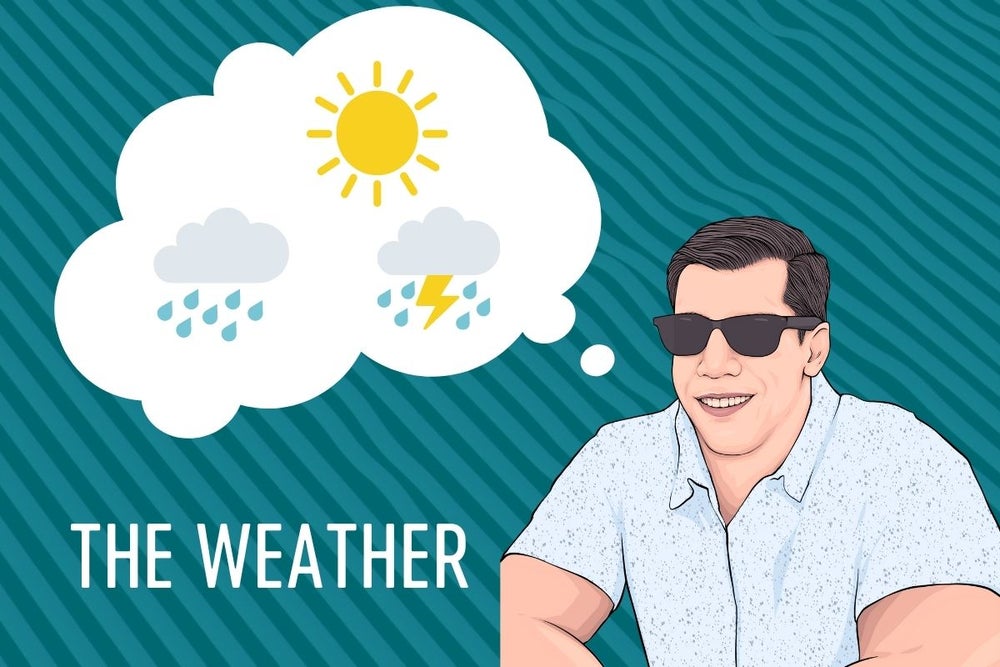From the Lab, News, Resources for Roasters
Monday, May 24, 2021
Weather Forecasting & Coffee
Coffee quality, price, supply and demand are directly tied to changes in weather. Predicting what will happen and how it will impact coffee is Greg Oddo’s specialty. As Weather Strategist for Sucafina, he analyzes weather patterns and predicts how they will impact coffee quality, prices and demand. Greg joined our team in late February and makes understanding the weather a breeze.

How did you become a meteorologist?
I don’t think most people get into meteorology by accident. Normally, you get bit by the weather bug at a young age, decide it’s what you want to do and pursue it. Being a meteorologist has been a long-term goal since I was a kid. If I wasn’t going to be an athlete, this is what I wanted to do, and I’m very happy to be doing it.
I grew up on Long Island, and I experienced a lot of different types of extreme weather living there. Hurricanes and tropical storms fascinated me in particular. In the summer, the Weather Channel had a tropical update every hour at the same time. I would stop playing and go inside to watch the tropical update and then go back out to play.
What is weather forecasting?
Weather forecasting is about analyzing all the data. We use that data to predict the most likely scenario and how it will affect a specific location and the market.
How does the weather impact coffee?
Weather affects coffee at every stage. Just starting at production, whether you get rain or heavy winds or a one off rain at flowering time is critical. Then, a lot of rain during harvest can negatively impact the crop. Cherry can rot on trees because they can’t get out to harvest it. You get phenol or ferment if there’s too much rain while trying to dry. As we saw in Honduras and Nicaragua this year, hurricanes can have huge impacts on the logistics element. Heavy rains too.
What does your job entail?
My job is to identify how weather events or potential events will impact coffee production and price. I look at the weather in the context of how the market will view it and how it will affect coffee production. It all revolves around the relationship between weather, supply and demand and market price.
How do you do it?
Before you can forecast what will happen, you have to know what has already happened. Meteorologists use a range of things from satellites to radar to ground station observations to figure out what going on at any specific time.
You start out with those tools of monitoring and historical weather – has it been unusually dry? Unusually wet over the past several weeks? Am I looking at a storm that will impact us in a few days? How is that behaving right now? We use upper air observations, radar. Those are the key tools of the trade to start.
And then, we’re using those observations as a base for the forecast. We’ll incorporate things like weather models, which are a key tool. We have a ton of weather models at our disposal. Short-range to figure out what will happen in the next 18 hours. Medium range models which focus on day 1 to 15. And then longer-range models that are designed to figure out the longer-term trends we’re going to be seeing. Knowing what has been happening is useful to figure out which of these models will help you best determine what will happen.
Forecasting is a combination of understanding what’s going on physically in the atmosphere and having instincts about what seems right. Really, the forecaster skill element is a big thing of what we do. That’s why I’m employed. The job is about combining science and instinct to figure out what the most likely scenario is moving forward.
How has accuracy advanced in recent years?
Weather itself is chaotic. We don’t have exact observations at every point on earth at all times so we have to make educated guesses. We use whatever information is available to make the best call we can make and communicate the odds.
Our error margins have gotten significantly better, particularly with hurricanes and with forecasting temperatures in the 5 to 7 day period. Our computing capabilities have increased significantly in the last 10 or so years so our ability to get massive amounts of data and analyze it has grown.
Currently, we’re trying to improve our skill at the beyond 10 days period. There’s going to be limitations on how good we can get. As you go further out, there are more variables that can impact your forecast. Everything we look at as an industry has improved with time.
Anything else?
I think the one thing people don’t understand about weather is why it’s so subjective. A lot of time I get asked ‘why is someone seeing something different than you are?’
There’s very big difference in view and data sources, and how we all put it together. If you’ve got an idea or a view on something you can probably find a piece of weather data that supports that. You can probably find a reason for a drought and run with it.
The trick in weather forecasting is taking a lot of competing weather data, sometimes things that are polar opposites, and trying to figure out what the right idea is and why.
Since the market affects you too, Greg is excited to debut a monthly weather forecast that will keep you up to date on the ways the weather and the market may affect you. Benefit from Greg’s love for (and expertise in) meteorological forecasting by subscribing to our newsletter and receiving the monthly weather update. His new weather forecast is not to be mist!